Innovator Profile 2014: DENTSPLY Caulk offers total solutions for restorations and more
DPR chatted with Dr. Nick Conte (L), DENTSPLY Caulk's Director of Clinical Research, and Nils Classen (R), Director of Marketing, about the company's "Class II Total Practice Solution" campaign and how it benefits dental practices.
DPR chatted with Dr. Nick Conte (L), DENTSPLY Caulk's Director of Clinical Research, and Nils Classen (R), Director of Marketing, about the company's "Class II Total Practice Solution" campaign and how it benefits dental practices.
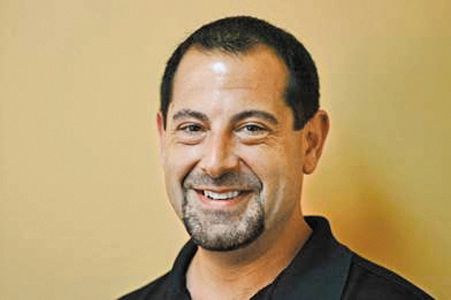

DPR: DENTSPLY Caulk has recently launched a new campaign “The Class II Total Practice Solution”. What can you tell us about this and how it is being received in the marketplace?
Classen
: We have received a lot of positive feedback on our Class II Total Practice Solution. It’s the first procedure approach that provides a comprehensive solution combining market-leading products with continuing education and customer support. It provides the clinician with a step by step approach to enable more efficient and durable Class II restorations. We have found that a lot of clinicians like this approach of not only providing products but also investing into education and readily available live customer support through our Restorative Specialist Team in the field and our dedicated support personnel at DENTSPLY Caulk.
DPR: Tell us how the DENTSPLY Caulk Class II Total Practice Solution sets itself apart from other manufacturers.
Classen
: We understand what impact Class II restorations have on the overall perception and performance of a dental office. There are a lot of great restorative products out there, however we are the only manufacturer that offers a “start to finish” product portfolio for this procedure. And because it is a comprehensive solution, it addresses all team members in the practice and how their role can impact this procedure.
DENTSPLY has the only Class II solution that provides restorative materials including anesthetics, the most advanced sectional matrix systems, a universal bonding agent, the market-leading bulk fill flowable, the only major universal composite with dentist-preferred handling options, a curing light with collimated light beam to ensure proper depth of cure and the market-leading rubberized finishing solution. Combine this with excellent customer service and continuing education and you have a winning combination. With our educational efforts, we are focusing on each team member’s role in this procedure and how we can educate them to be more efficient and consistent with this procedure.
Next page: Dr. Conte and Mr. Classen discuss how a new curing light fits into the Class II workflow.
DPR: Data shows 45% of all direct restorations are Class II, which is a significant portion. If you had to make your case to a dentist as to why they should use your system for their Class II restorations, what would it be?
Conte
: As a clinician we are always looking at treatment results and how we can pursue better dentistry for our patients. When we consider longevity of amalgams versus composites, it is easy to recognize that we need to improve the clinical procedure around adhesive based dentistry to create restorations that will be long lasting. Our Class II solution addresses this in several ways. Palodent Plus is the most advanced matrix system available today and considering that isolation is of paramount importance in adhesive dentistry, it all starts there. Once isolated, we have a universal adhesive system that gives the dentist options to treat the substrate most appropriately; total etch to enamel and self-etching to dentin in only one product. The SmartLite Focus is designed to retain power over clinically relevant distances. Most lights lose up to 65% of stated output over distances of 6-8mm while the Focus retains much of its output over this distance. Considering the average depth of a proximal box in a Class II is 6mm, and you can’t position the light within a couple of mm of the occlusal surface based on cuspal inclines, it is easy to see that you are often 8mm away from the first materials being cured. This can impact both the adhesive layer and the first increment of composite.
See the Class II system in action for the full restorative process.
Regarding composites, we have SureFil SDR flow, which is a low-stress bulk fill material, and TPH Spectra with handling options to meet the clinical scenario. Finally, to ensure a smooth restorative surface that is resistant to staining and biofilm accumulation, we have Enhance Finishers. These silicon-based instruments are designed to achieve both intermediate and final finishing, while minimizing heat transfer and avoiding damage to the natural tooth. So, as you can see, at every step of the procedure, we have a material that is designed to improve restoration results and the quality of care we offer to our patients.
DPR: DENTSPLY Caulk recently launched a new curing light, the SmartLite Focus. How is this light different from other curing lights?
Conte
: We recognize that the number one reason for composite failure is recurrent caries, and the floor of the proximal box in a Class II is the most vulnerable interface. Research suggests that inadequate light curing can be a significant cause of premature failure at this critical interface. Manufacturers’ stated irradiance values can give the clinician the impression that they are using a powerful light, when in reality many curing lights are delivering as little as 35% of that stated output value to where it counts, at the floor of the proximal box which is often 8mm or more away from the light tip. In addition, the distribution of light intensity across the tip of each light varies. If the diameter of the light beam is not uniform, this can lead to a non-uniform cure across the restoration. On top of that, the physical design of the unit impacts intraoral access and ease of operation. The SmartLite Focus was designed to minimize many of the variables associated with light curing. Its collimated light beam reduces light divergence to ensure a reliable cure all the way to the floor of the proximal box. A homogeneous beam profile provides uniform performance in the curing area, and its pen-style design with low head profile and long rotatable tip provide excellent intraoral access. Easy one-touch operation, low heat generation and a lightweight ergonomic design bring reliability and simplicity to the light-curing step in the procedure.
Next page: Learn how the Aquasil Ultra Cordless Tissue Managing Impression System is changing the game.
FEATURED PRODUCTS
DENTSPLY Caulk's Class II Solution
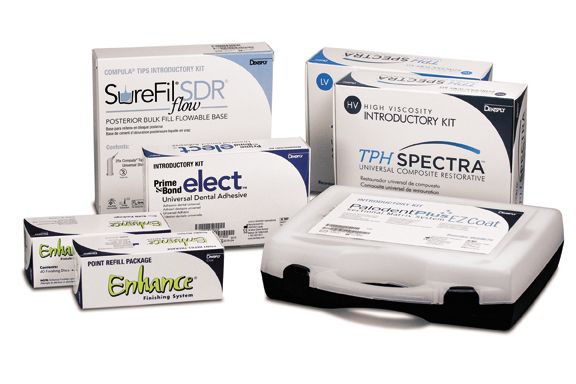
Includes SureFil SDR flow Bulk Fill Flowable Base, Palodent Plus Sectional Matrix System, Prime&Bond Elect universal adhesive, TPH Spectra universal composite and the Enhance Finishing System.
“We have been able to make a meaningful change to the impression-taking procedure that makes it simple and predictable.”
DENTSPLY Caulk recently made a splash in the area of impression materials with the launch of the Aquasil Ultra Cordless Tissue Managing Impression System. Here’s an interview with Paul Pierson, Principal Packaging Engineer R&D, and Richard Burde, Senior Brand Manager for indirect restoratives, on this new retractionless tissue managing impression system.
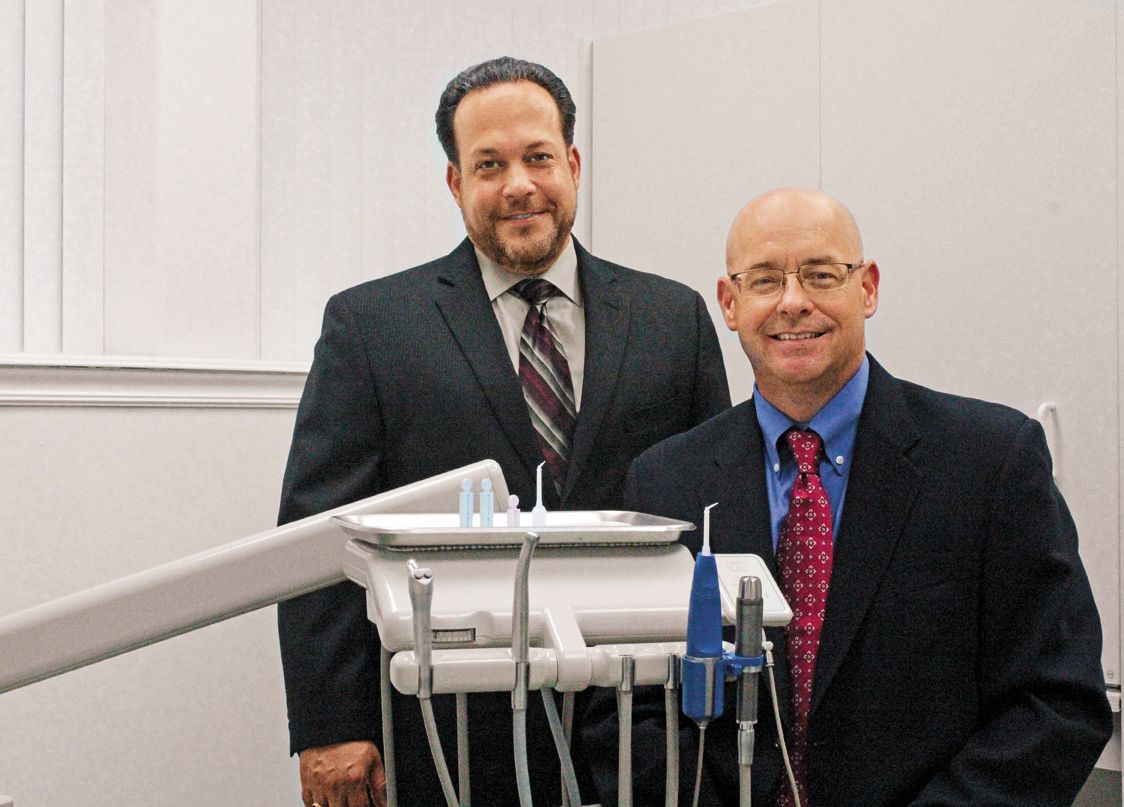
DPR: What was your role in this product’s development?
PP
: I played a two-part role, one as co-project manager and the other as lead engineer. I shared the project management responsibilities with my marketing counterpart, Rich Burde. Together, we managed the development phase of the project and coordinated the activities of internal and external engineers, scientists and clinicians. As lead engineer, I was responsible for the technical development of the digit power™ Dispenser, which involved taking it from concept to a finished product. This project was truly a group effort, which required the skills of many talented professionals at Caulk. Several scientists developed the formulation and other engineers worked on our filling capabilities. Many others contributed to our product development efforts.
RB
: As the marketing representative for DENTSPLY Caulk’s Indirect Restorative products, I own the Aquasil Ultra brand. I have been part of this project from the ideation stage to the launch. It took the efforts of a cross-functional team consisting of Clinical, Marketing, Engineering, R&D, Quality and Manufacturing representatives to develop this innovative new product. We take a close look at the different procedures and products and strive to design products that provide solutions to meet the demands of our growing dental community.
DPR: What were some of the challenges?
PP
: Trying to make an affordable system, keeping costs down and trying to create a device that was comfortable and easy for doctors to hold. We focused on a pen-shaped design so doctors could hold the dispenser like a drill. The other challenge was incorporating pressure regulation into the system. We separated the pressure regulator from the handpiece to keep the handpiece light and small. We also developed an adapter that allows the dispenser to fit on dental delivery units for activating and deactivating the air supply.
RB
: Initially we ran into a challenge when we tried to create a material that retracted tissue the same as retraction cord. What we found was we didn’t need the same type of retraction that you get with retraction cord. Visually the impressions look different. They have a thin film, not a thick band of material around the prep. Dental laboratories confirmed that all of the marginal detail was present and found the impressions acceptable. Crowns that were made from the impressions were clinically successful and fit well. The result is possible because the pneumatic digit power™ Dispenser places the Aquasil Ultra Cordless Tissue Managing Impression Material directly into the sulcus through the ultra-thin intrasulcular tip capturing the finest marginal details.
DPR: What features are you most proud of?
PP
: I’m proud of the entire device and the new procedure. We have been able to make a meaningful change to the impression-taking procedure that makes it simple and predictable. It’s going to make a big difference in the way a lot of dentists practice. And that’s not just me talking. That’s what we’ve heard from our users.
When tissue retraction pastes came onto the market, a real surge of people began developing products in that new category. That’s because everyone recognized packing cord was difficult and there needed to be a better way. Dentists went toward retraction pastes to find a better solution. They found that retraction paste manages hemostasis, but does not provide the retraction they’re looking for. Our system has a very fine cannula that enables us to get material directly into the sulcus with precision, so you don’t need the cord or the paste.
RB
: I am proud of several additional product features: First, we optimized the Aquasil Ultra formula by increasing its market-leading tear strength to a new super high level, ensuring even the thinnest margins stay intact upon removal. Second, we have designed a built-in safeguard against intraoral work time violations. Each digit power™ cartridge can be fully dispensed within its intraoral working time and allows enough time to seat the impression tray. Third, there is a significant placement time savings, 5-7 minutes, when not packing cord or retraction paste. This is time that can be used to accomplish other tasks like checking another patient. Lastly, because we are combining two categories, tissue management and the impression making procedure, we created a new category called Tissue Managing Impression Material.
Next page: See real screenshots from a case study created using the Aquasil Ultra.
Accurate C&B impressions
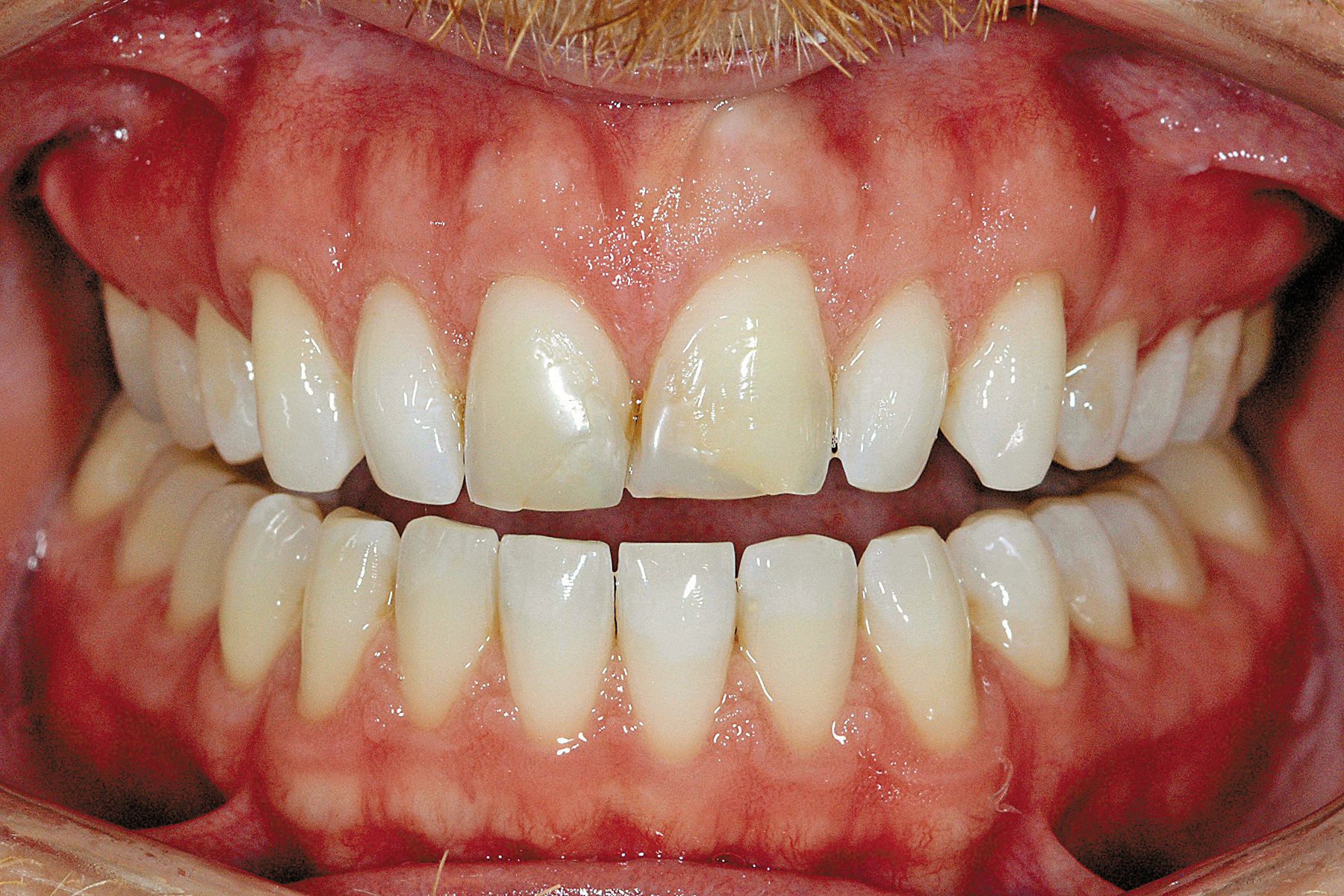
Fig. 1: Pre-operative view of 25-year-old male patient. Buccal retracted view.
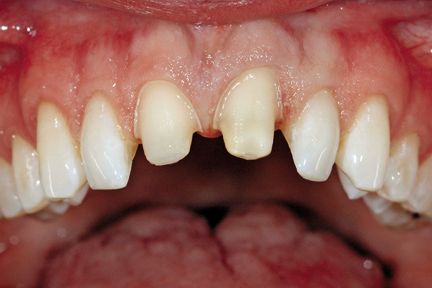
Fig. 2: Finished preparations on patient for full coverage lithium disilicate restorations on tooth Nos. 8 and 9. Buccal retracted view.
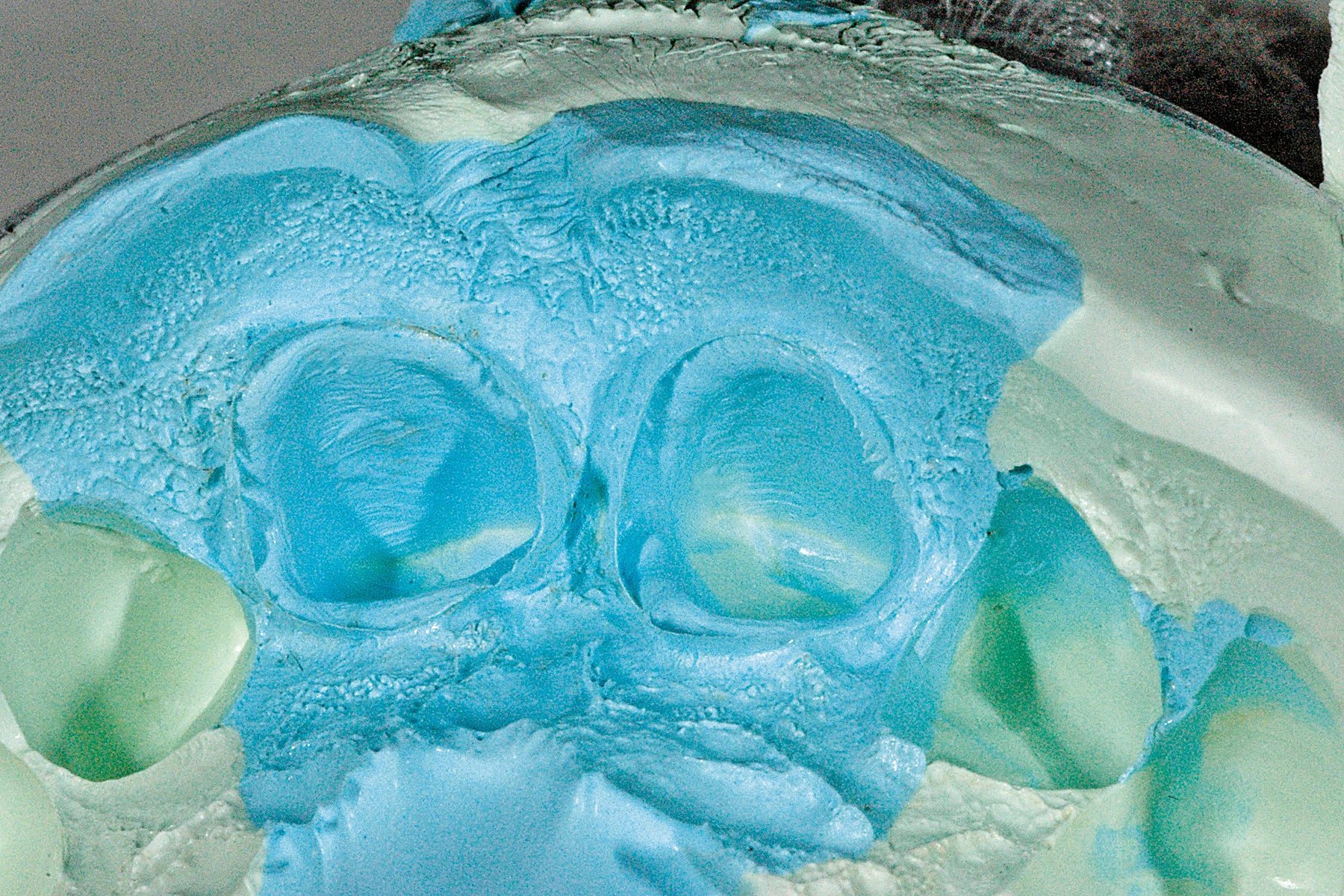
Fig. 3: Final impression of tooth Nos. 8 and 9. Note the extension of the material on the mesial tooth. No. 8 cord was used.
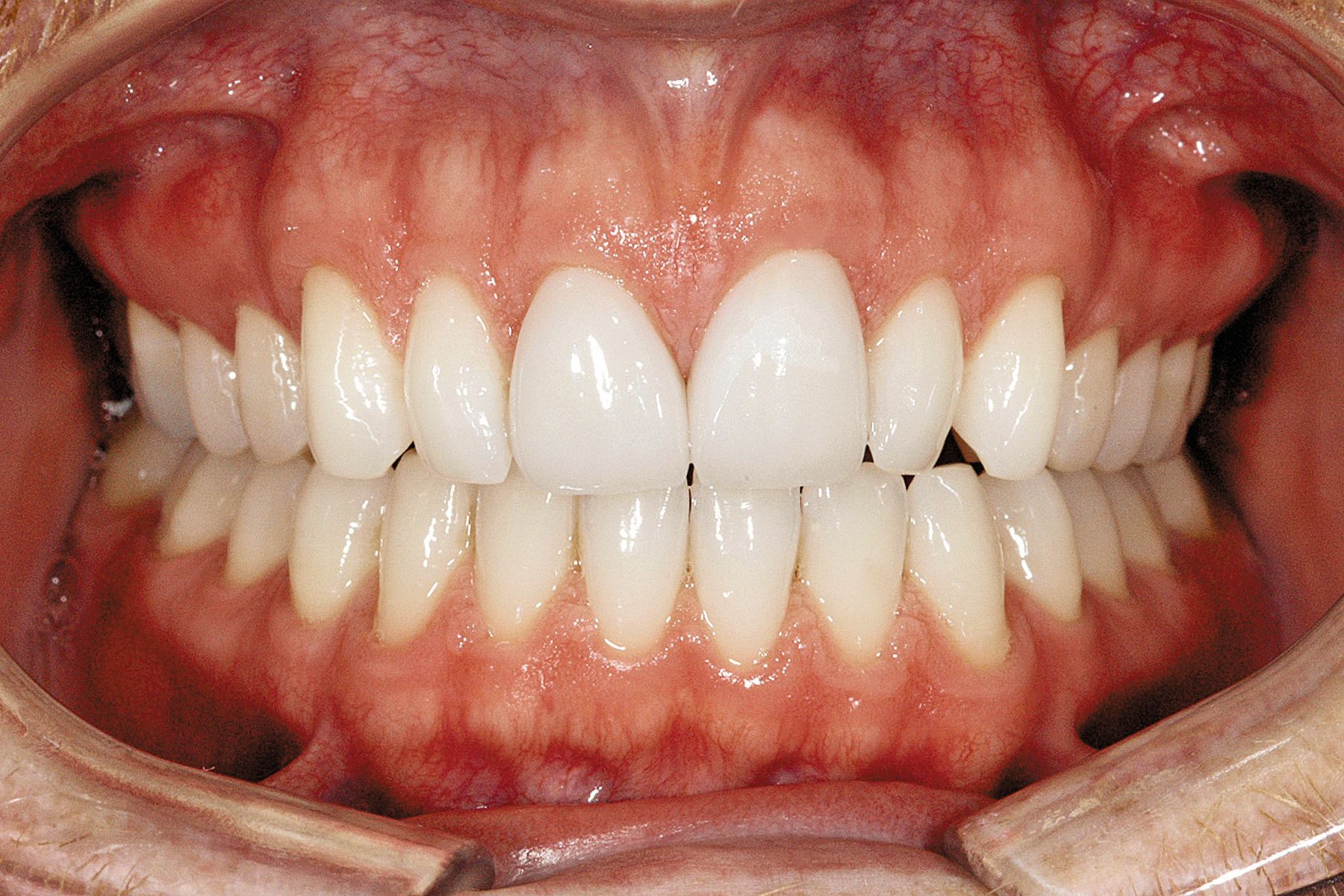
Fig. 4: After final cementation of lithium disilicate crowns on tooth Nos. 8 and 9. Buccal retracted view.
For this complete case study on Aquasil Ultra Cordless from Dr. Jason H. Goodchild, DMD, click here.
FEATURED PRODUCTS
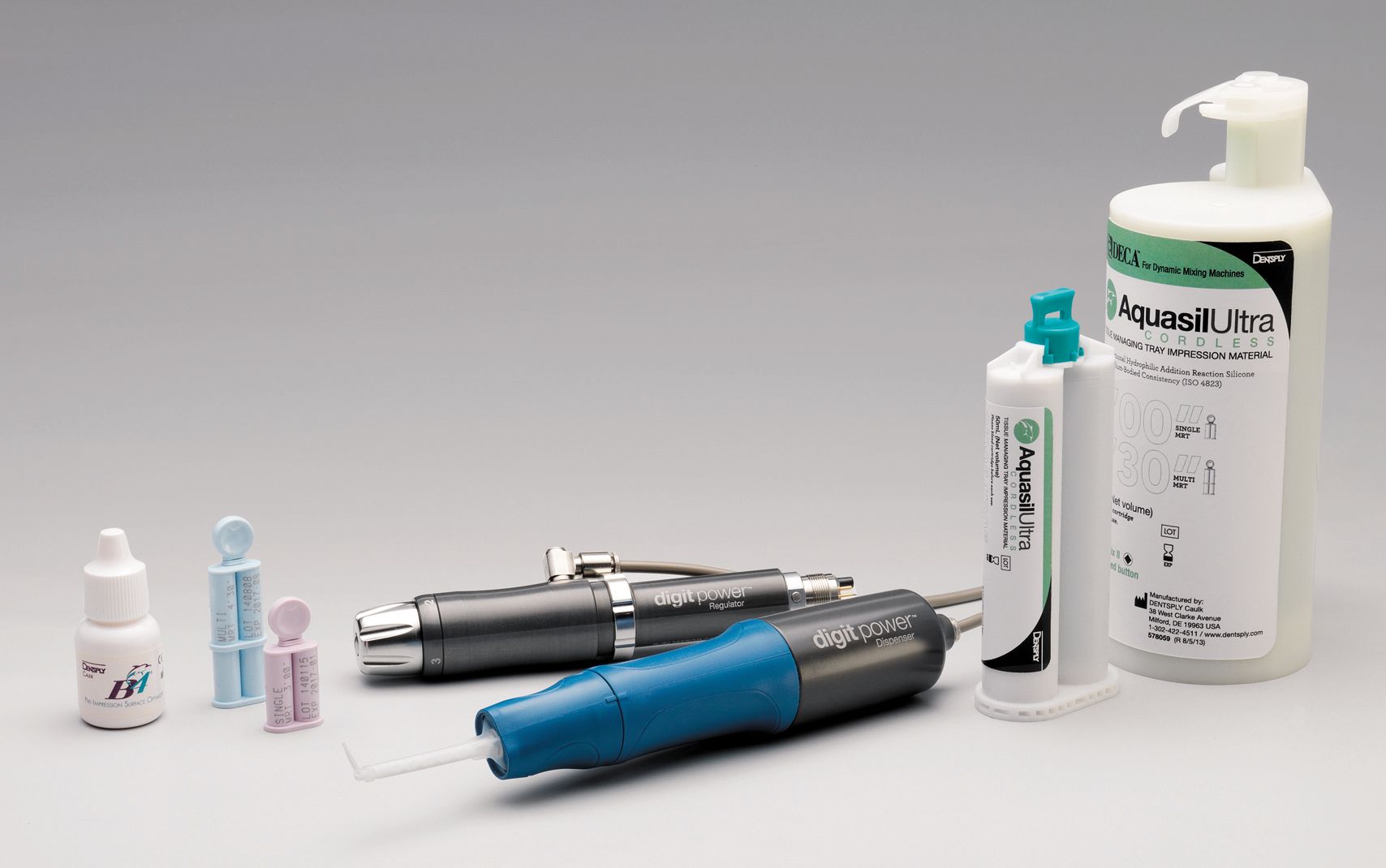
Aquasil Ultra Cordless is a Tissue Managing Impression System that eliminates the need for retraction cord and paste in most cases. It provides an easy, one-step system that places super high tear strength wash material precisely into the sulcus within seconds for a less stressful experience that delivers incredibly accurate marginal detail.
SureFil SDR
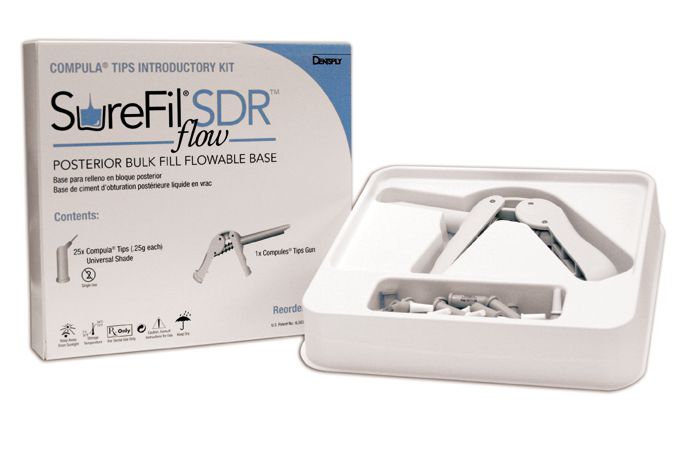
SureFil® SDR® flow represents a major evolution. It is the first bulk fill flowable base that makes procedures easier and faster while providing long-lasting results. SDR™ Technology reduces polymerization stress by up to 60%, allowing for a 4mm bulk fill. Nothing could be simpler. It is the only flowable that self-levels, providing excellent cavity adaptation without any manipulation.
Palodent Plus
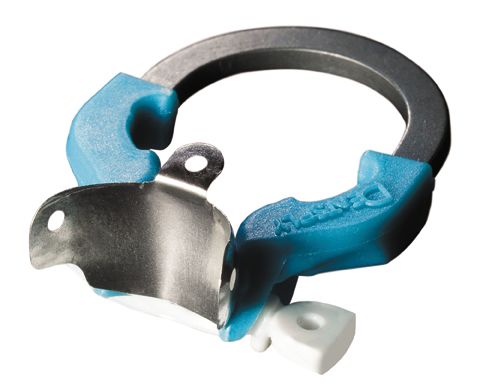
The Palodent® Plus sectional matrix system is comprised of six precisely designed components: rings, matrices, wedges, wedgeguards, forceps and pin tweezers. These have been designed and refined for optimal performance individually and as a system. As a result, Palodent Plus is among the simplest and most accurate matrix systems on the market.
“...ensure effective light curing of materials and create outstanding restorations”
DPR talked to Dr. Jason Goodchild about the important role DENTSPLY Caulk products play in his practice, plus how to get the most out of what they offer.
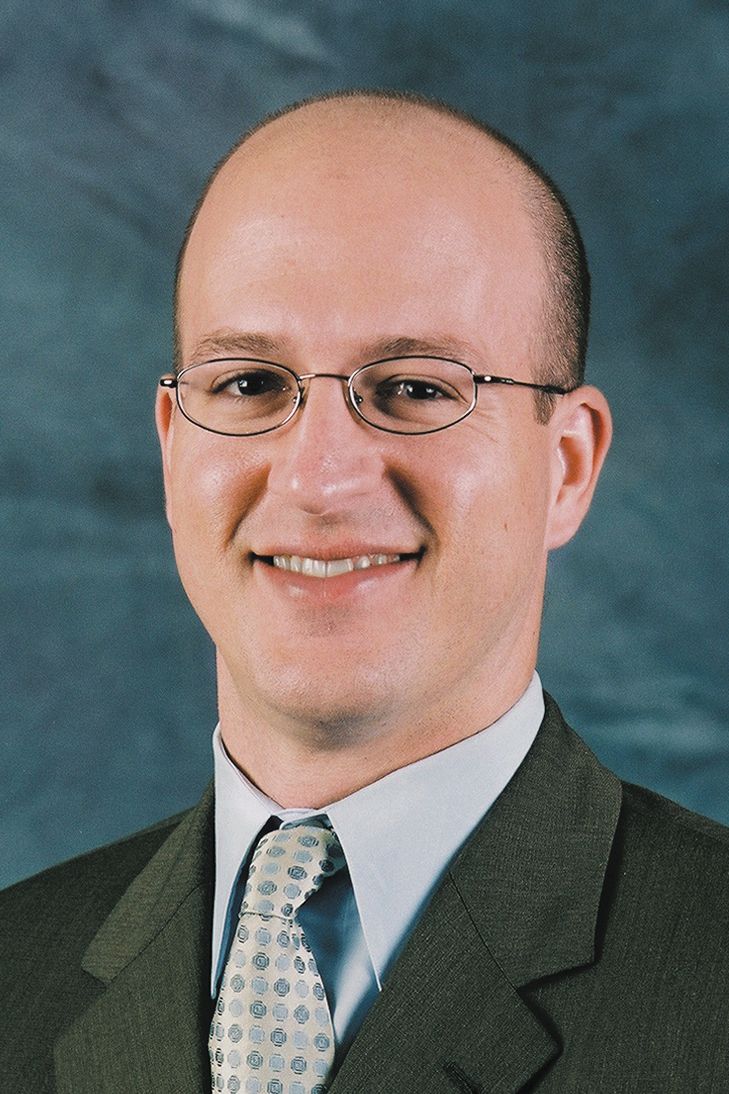
DPR: Why is it critical for clinicians to understand the importance of proper curing and what advice can you offer?
JG
: To help clinically, practitioners should remember the acronym, CORE (Curing light, Operator technique, Restoration characteristics and Energy requirement) to ensure best performance and outcomes when using a light-curing unit (LCU). One of the characteristics of LCUs that is most often advertised is the output or irradiance. Just because an LCU has an advertised irradiance of 1400 mW/cm2, for example, does not mean that is how much energy is making it into the composite to cure it. All curing lights experience an energy drop-off over distance that decreases the amount of energy delivered to the restoration, and the amount of energy drop-off varies among LCUs. In one study, a 50% reduction of irradiance was reported at a 6mm distance from the light guide. If the average clinical crown height of posterior teeth is 6mm, clinicians may be faced with curing composite resins in deep preparations at a significant distance from the LCU tip. Remembering the acronym CORE, deep composite resin restorations demand a high quality LCU, good operator technique, the ability to direct the light into the preparation and sufficient curing time for the individual type and shade of material.
DPR: DENTSPLY Caulk recently launched an exciting new curing light. What makes the SmartLite Focus an innovative entry into this product category?
JG
: To provide clinicians with a LCU that can perform at clinically relevant distances and help maximize curing efficiency, DENTSPLY Caulk has introduced the SmartLite Focus. The SmartLite Focus is an ergonomic, powerful, cordless, pen-style LED curing light from DENTSPLY Caulk for both direct and indirect restorative applications. SmartLite Focus is designed to enhance intraoral access and curing efficiency, and provide reliable curing power over long distances.
DPR: What sets the SmartLite Focus apart from some of the other available curing lights?
JG: Some important features of this new LCU are:
- Improved access: The newly designed light probe maximizes intraoral access by providing a low head profile and long rotatable tip that can swivel 330° to achieve proper position anywhere in the mouth.
- Maximized Curing Power and Efficiency: It features a homogenous beam profile for uniform performance in the curing area. The SmartLite Focus optics reduces divergence and ensures enhanced energy transmission through a collimated beam; this allows efficient curing of surfaces up to 8mm from the tip. The SmartLite Focus has an average output of 1,000 mW/cm2.
If I complete all the composite placement steps correctly (isolation, material placement, and light curing), at the conclusion of the procedures I feel confident that the restoration will perform clinically for years to come. Practitioners should be mindful that effective light curing is another one of the vital steps required in composite resin restorations. Just pointing the light at the tooth is not enough; clinicians should perform light curing with the same attention to detail as any other step in the process. The SmartLite Focus is a way to help practitioners ensure effective light curing of materials and create outstanding restorations.
FEATURED PRODUCTS
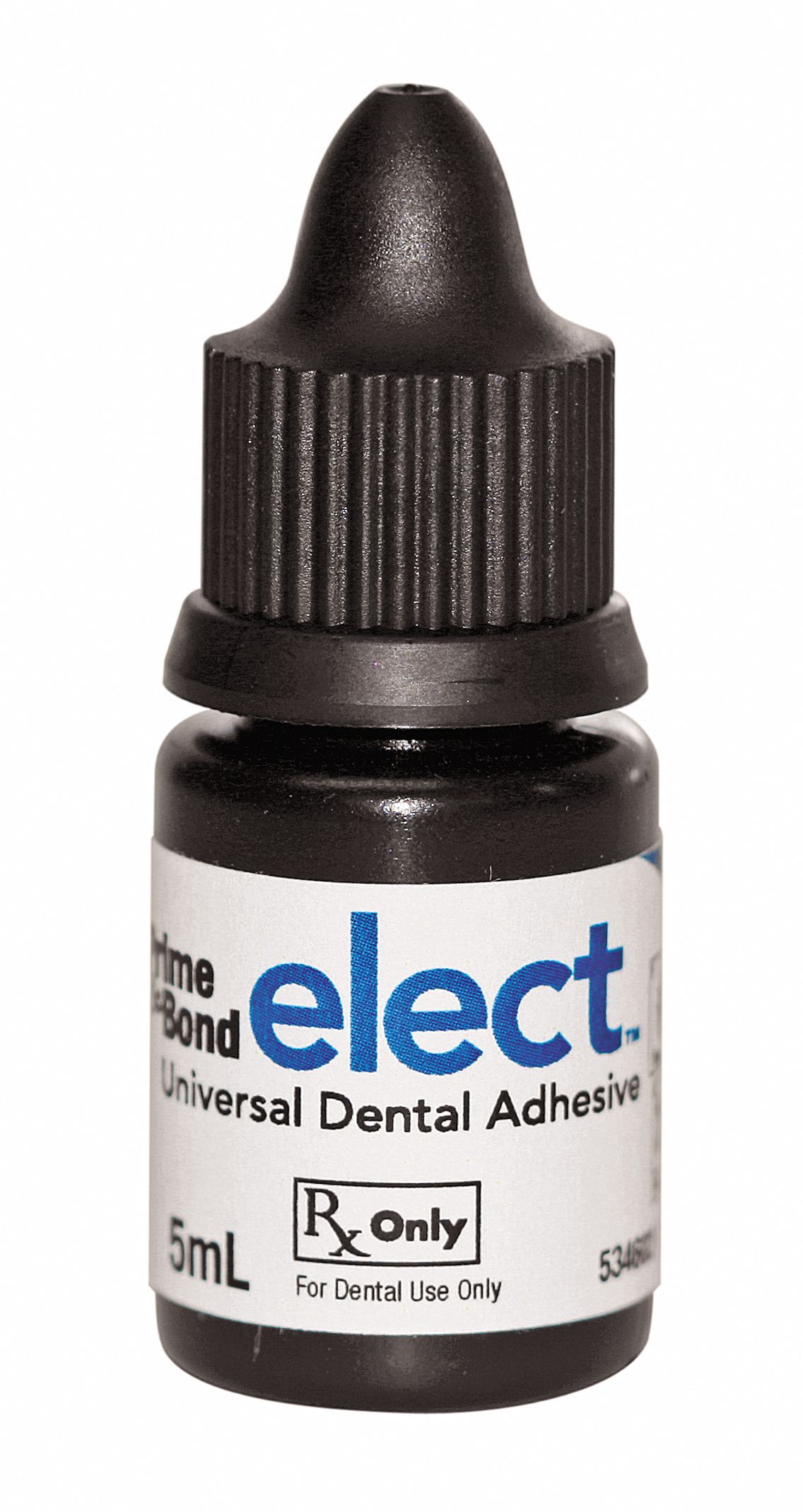
Prime&Bond Elect is designed as a one-bottle dental adhesive suitable for all-three adhesive modes: total-etch, self-etch and selective etch. Built off of 13 years of proven PENTA (i.e. the adhesive resin dipentaerythritol pentaacrylate monophosphate) technology from Prime&Bond® NT™, this new bonding agent provides a unique micromechanical and chemical bond for long-term success. Prime&Bond Elect® has a low film thickness which can help prevent adhesive pooling which could lead to false indications of recurrent decay. For indirect restorations, the low film thickness will ensure passive seating of the crown. Prime&Bond Elect is designed to provide consistently high bond strengths in both enamel and dentin with virtually no post-operative sensitivity.
TPH Spectra

TPH Spectra® Universal Composite provides a choice of handling preference with TPH Spectra LV (Low Viscosity) and TPH Spectra HV (High Viscosity) that is spreadable or packable, respectively. Taking advantage of its excellent chameleon effect, it offers seven VITA-based shades that cover the entire VITA shade guide. The reduction in number of shades allows for a reduced inventories and less confusion over picking shades. Its handling choices, blending effect, and simplified shading system should provide confidence that final restoration will be easy to place, and perform clinically for years.
SmartLite Focus
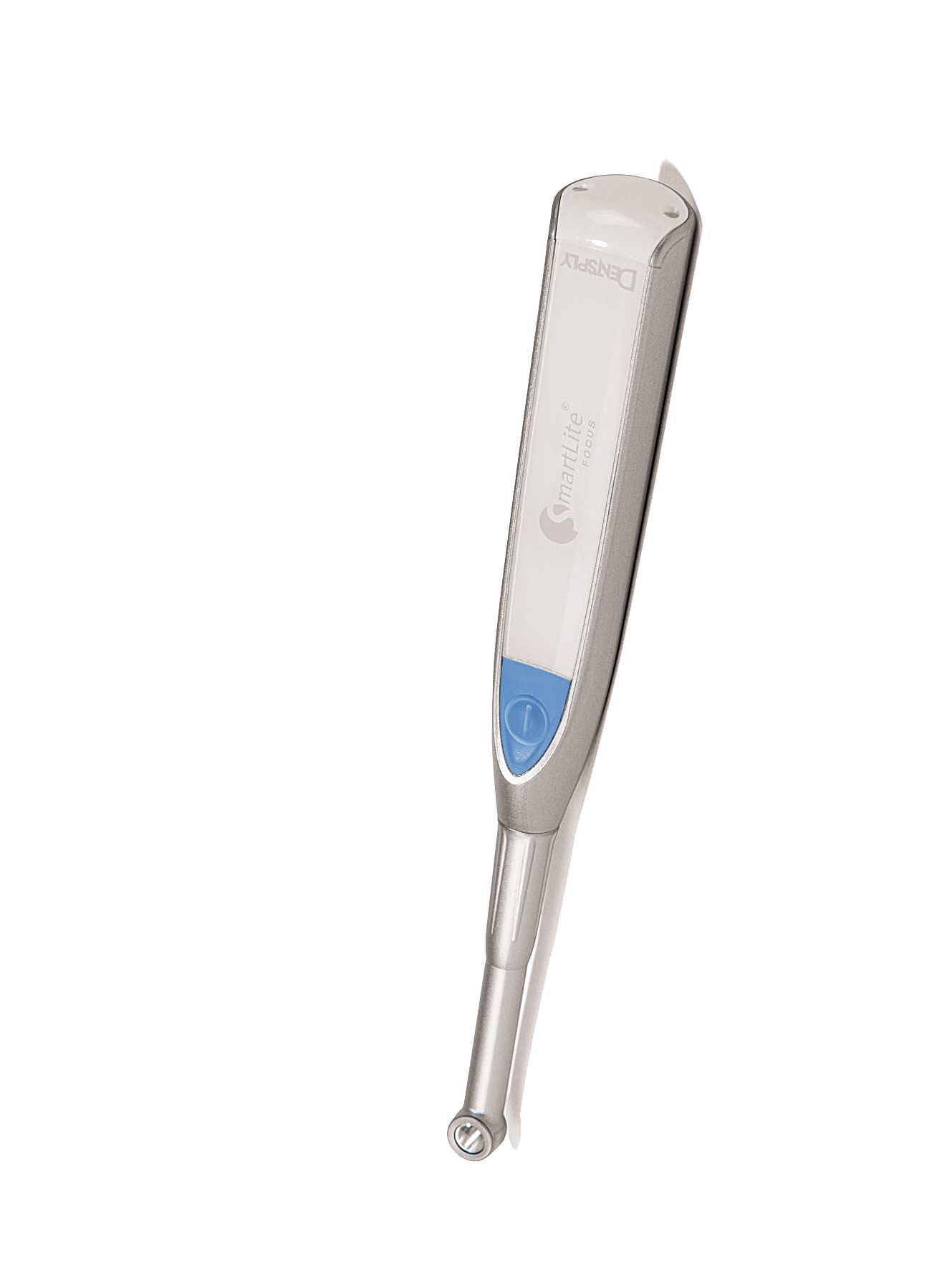
This pen-style LED curing light is designed to ensure reliable curing to the floor of the proximal box, the most vulnerable interface in a Class II restoration. Its collimated light beam reduces light divergence for a dependable cure over larger distances, while a homogeneous beam profile delivers uniform performance within the curing area. Other features include easy one-touch operation, lightweight design and optimal intraoral control.
ACTIVA BioACTIVE Bulk Flow Marks Pulpdent’s First Major Product Release in 4 Years
December 12th 2024Next-generation bulk-fill dental restorative raises the standard of care for bulk-fill procedures by providing natural remineralization support, while also overcoming current bulk-fill limitations.